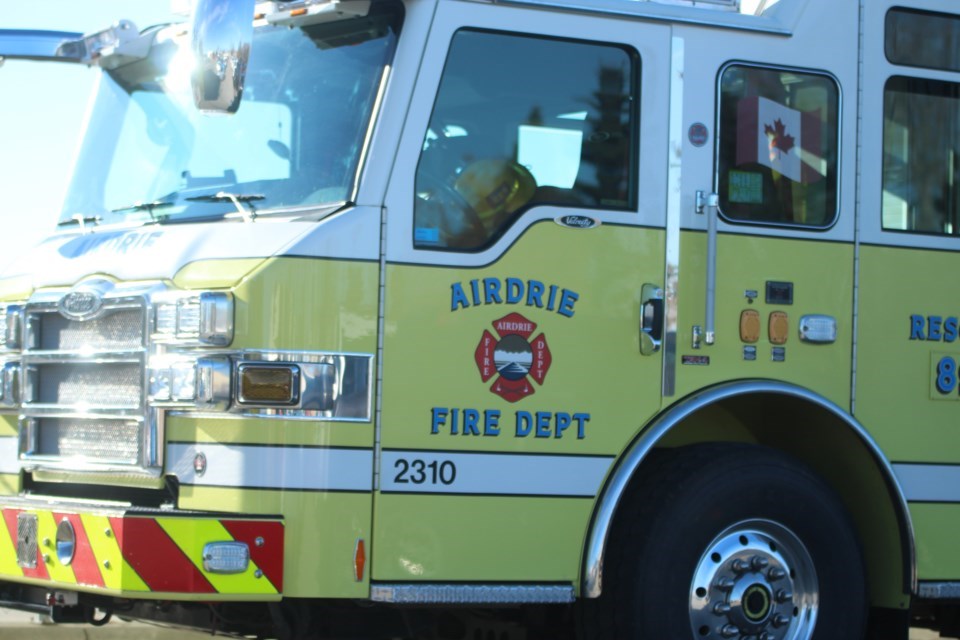Partly in response to last week’s red alert in Airdrie that left multiple medical calls without available ambulances, Alberta health minister Jason Copping has announced the provincial government is launching an emergency medical services advisory committee to provide immediate and long-term recommendations to inform a new provincial Emergency Medical Services (EMS) service plan.
According to Copping, EMS saw a 30 per cent increase in 911 calls over the past few months, which is similar to challenges seen across Canada and globally.
Lia Lousier, who waited 45 minutes for a first response after her son slipped and broke his leg during a red alert in Airdrie on Jan. 20, said it’s reassuring to hear the government is taking some action.
Lousier and her 10-year-old son Braeden were headed to a doctor’s appointment for Braeden’s bone infusion condition last Thursday when he slipped on the sidewalk, resulting in a severe injury to his leg.
“The whole freak accident of the way he fell is what caused such a bad break,” Lousier explained. She added Braeden's medical complexities also added to the seriousness of the call.
After getting Braeden into her car to keep him warm and bracing his leg in a position that was most comfortable for him, she called EMS.
Following her 911 phone call, Lousier was under the impression an ambulance was on its way, but when EMS personnel called back, they told her there was no ambulance available in the city and they were waiting to get Lousier help.
“I begged them to send us a fire truck because I couldn't hold the position that I was in trying to stabilize him and it was already 45 minutes of standing there at a very awkward angle. If I even breathed heavily he would scream in pain,” Lousier said.
The Airdrie Fire Department responded to the call and confirmed that no ambulances were available at the time. After assessing the situation, fire department members made the call to transport Braeden to the Airdrie Urgent Care Centre, where he could be stabilized, x-rayed, and given pain medication.
On their way to the urgent care centre, Lousier said she heard three more medical calls come in.
“I said to the fireman, ‘If we had internal bleeding,’ and the firemen looked at me, I said ‘I would have just watched my child die because there was no help’,” Lousier said.
She added that having a child with medical complexities is very difficult, but to also know that no first response service was available when needed, was terrifying.
Braeden was eventually transported from the urgent care centre to the Alberta Children’s hospital in Calgary by EMS, arriving four and a half hours after the initial fall.
According to Lousier, Braeden required emergency surgery to fix the broken bone in his leg and is now sporting a cast from his upper abdomen to his ankle. After being home for a few days, he’s still adjusting and learning how to navigate in his restrictive cast.
“He couldn't walk until [age] five and a half so he knows what being in a wheelchair is like, he's just not used to the leg sticking out the one end,” Lousier said.
Given the situation she experienced on Jan. 20, Lousier said more attention needs to be given to the front lines, including EMS, fire, police, hospital staff, and health-care workers.
“They aren't getting down time, people are burning out and calling in sick. People are burning out mentally and taking leaves from work without anyone to replace them,” Lousier said. “The whole system was struggling since before the pandemic. There's no surprise there, but it's just been pushed aside.”
Ten-point plan
According to a Jan. 24 press conference, Alberta Health Services (AHS) is rolling out a 10-point plan to add capacity to EMS.
In a statement, AHS EMS said they are aware of the incidents in Airdrie, which occurred during a time of unprecedented demand and 911 calls.
“EMS was extremely busy throughout the Calgary Zone on Thursday [Jan. 20], for a number of reasons including slippery sidewalks. Like all areas of the health-care system, EMS is feeling the pressure of the peak of this Omicron wave,” their statement read.
In two separate instances on Jan. 20 in Airdrie, Airdrie Fire Department crews made the decision to transport two patients to the Airdrie Urgent Care Centre.
“Airdrie Fire Department firefighters are trained paramedics. We appreciate the partnership we have with the fire department, and thank them for their support,” EMS stated.
To ensure critical patients continue to receive immediate care, AHS EMS actively re-assigned supervisors to frontline and first responder roles, as well as consolidated the care duty for patients awaiting transfer to an emergency department.
AHS’ statement went on to say that EMS staff worked with hospital staff to employ quicker transfer of care protocols at hospitals, which allowed ambulances to get back on the streets more efficiently, while ensuring patients receive the hospital care they need.
Non-urgent Inter-Facility Transfers are paused and instead these ambulances are used to respond to 911 calls.
“AHS has offered any EMS staff willing to work overtime. This will further augment the additional staff and ambulances that we have filled in recent weeks,” the statement read.
According to a prior provincial news release, AHS increased the number of paramedics by more than 200 over the last two years – a nine per cent increase. The provincial EMS budget is $20 million higher than it was in 2019.
In addition to increased 911 calls, EMS also faces staffing fatigue and illness, hospital offload delays, more requests for patient transfers, and delays in receiving new ambulances and specialized vehicle parts caused by global supply issues.



